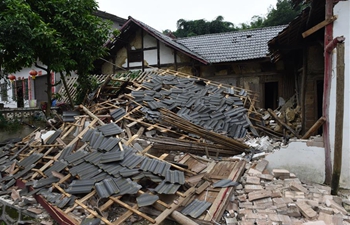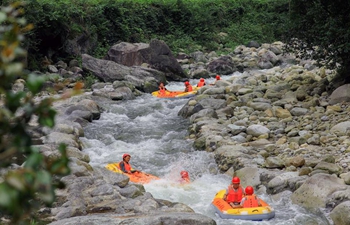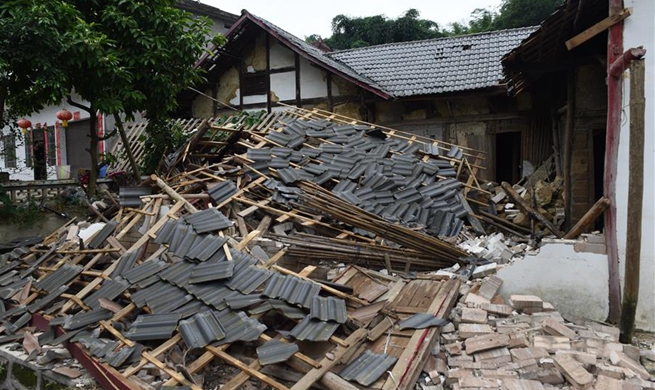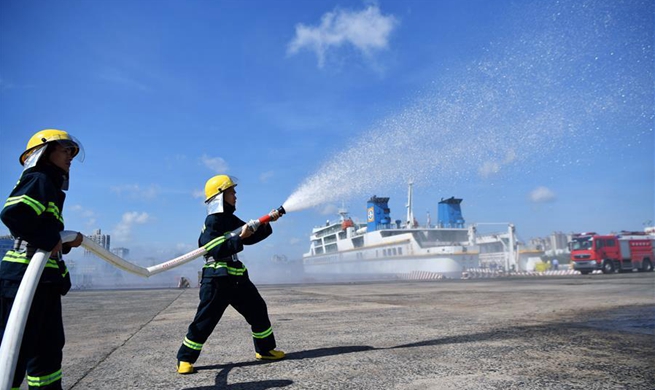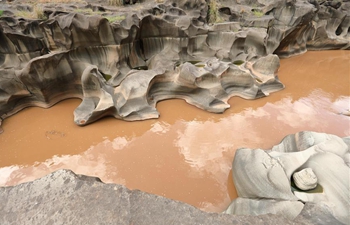TOKYO, June 18 (Xinhua) -- Japanese Defense Minister Takeshi Iwaya on Tuesday apologized yet again for another mistake that was made in a geological survey to select candidate sites for the deployment of the controversial Aegis Ashore missile defense system.
Iwaya admitted that Defense Ministry officials made another miscalculation involving the elevation of a mountain at a potential candidate location.
Iwaya said the calculation was three meters off and described it as a small margin of error.
The latest miscalculation came on the heels of Iwaya apologizing to Akita Gov. Norihisa Satake a day earlier for the ministry's initial flawed geographical survey that led to the northeastern prefecture being selected as a candidate site for hosting the missile system.
Iwaya said the ministry will carry out an on-site survey and possibly use experts to fix the numerical errors found in the ministry's first survey.
Defense Ministry officials initially used Google Earth virtual globe software to display cross-sections of candidate locations' topography, but failed to correctly calculate distances and altitudes correctly, due to not accounting for the necessary scale reductions.
Officials then reportedly used rulers and protractors to calculate the elevation angle of mountain peaks at nine out of 19 candidate sites in the Tohoku region, leading to some potential deployment locations being erroneously rejected for being too steep and for possibly blocking radar signals.
Satake told a press briefing that he rejects the ministry's explanation for selecting Akita as a candidate site for the controversial missile system.
Satake also indicated he told Iwaya that it was possible that the Ground Self-Defense Force's (GSDF) Araya Training Area in the prefecture was selected as a candidate site for the Aegis Ashore missile system, prior to any geological surveys being carried out by the government.
Concerned residents in Akita said that there was no way for them to feel safe when the people promising their safety cannot even perform simple calculations.
In addition, the ministry has also come under fire recently for one of its officials falling asleep during a public meeting in Akita City, held specifically to try and gain the understanding of the people in the region about the possible deployment of the missile system and to help allay safety concerns.
Separately, Iwaya also said Tuesday that people living in the vicinity of the missile system could fall ill due to electromagnetic waves generated by the systems' radars.
Asked during an Upper House committee meeting what might happen to a child or a pregnant woman if they spent 10 minutes, 50 meters away from radar during its maximum operational output, Iwaya said their body temperature might rise and they could feel unwell.
He went on to say that shielding against electromagnetic waves would be put up on walls surrounding the hardware and at-risk people would be prohibited from entering potential harmful areas.
The Defense Ministry said it plans to deploy two of the United States-made land-based Aegis Ashore missile interceptor systems, with Araya and another site in Yamaguchi Prefecture in western Japan being shortlisted as candidate sites.
Opposition party members have described the ministry's fiasco as "disgusting" and stated they have been "stunned" at its behavior.
Some members have maintained that Prime Minister Shinzo Abe's push to revise Japan's pacifist Constitution, in light of the ministry's monumental slip-ups, was now unthinkable owing to such basic mistakes being made and the ministry's behavior.
